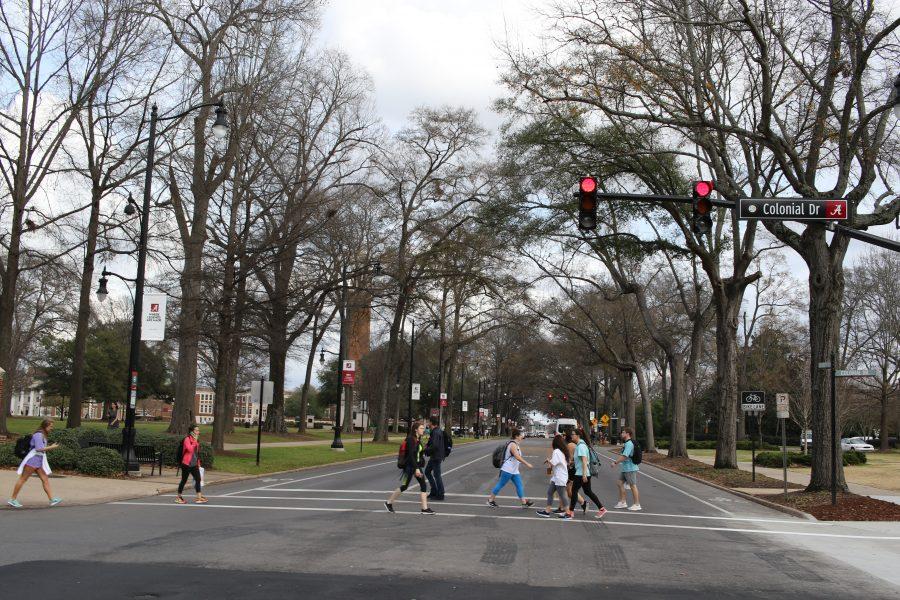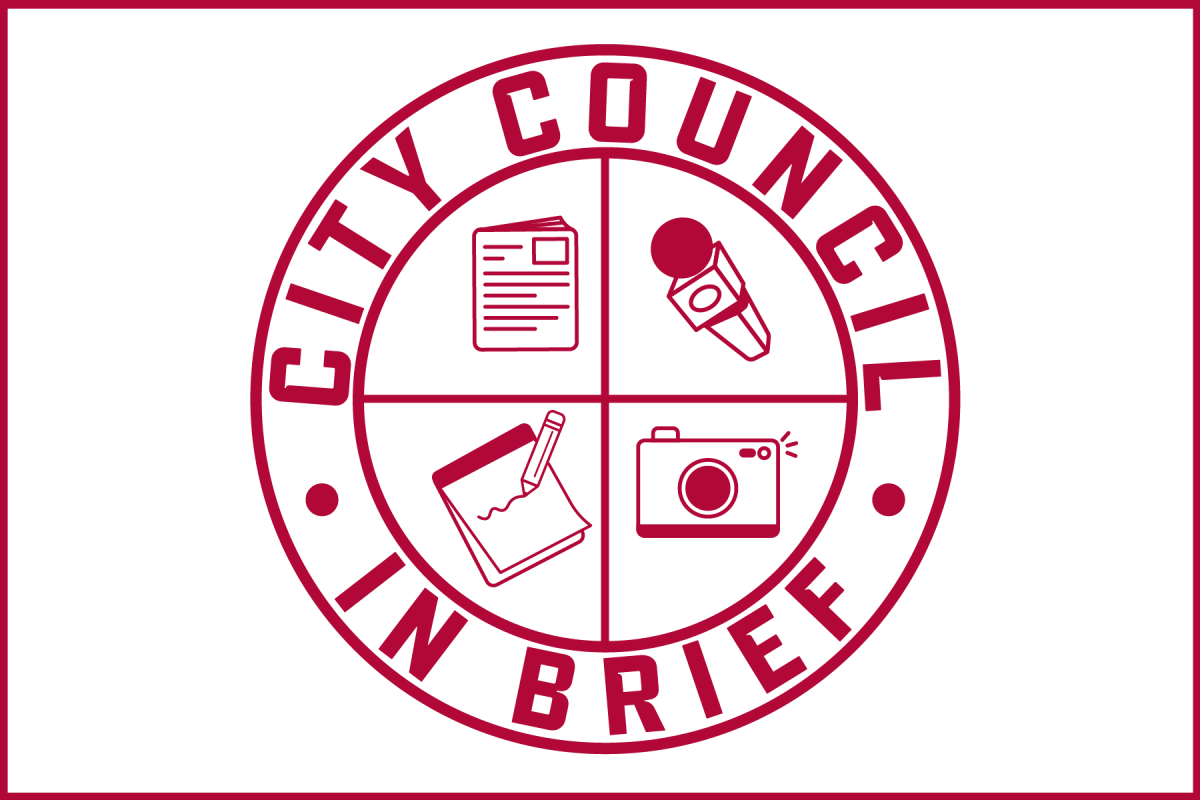After watching a pedestrian almost get run over by a car on her way to class, Paige Cisneros decided this was a frightening enough occurrence to stop wearing headphones while walking.
“It’s dangerous because you can’t hear oncoming traffic or if someone honks their horn at you,” Cisneros said.
The United States had 5,987 pedestrian fatalities last year, the highest number recorded since 1990, according to The U.S. Department of Transportation’s National Highway Traffic Safety Administration.
Rhonda Stricklin, associate director of the Center for Advanced Public Safety (CAPS), said these high numbers coupled with the distracted walkers she sees on campus scare her.
“I was surprised when I started looking at these numbers by how many pedestrians get killed every year, and that’s scary on our campus because there’s so many, and I see people just walking,” Stricklin said. “They do have the right of way, but if you’re dead, you’re dead. Even if you use that right of way, it pays for you just to look and just be sure before you step out into the road.”
While there are many different causes for pedestrian deaths, David Brown, research affiliate for CAPS, said there are types of warnings and information that make people take precaution with traffic that they may not hear when walking with headphones in.
Brown said pedestrians tend to be in “another world” if distracted by a cell phone, even if it is strictly an oral conversation. However, he said the distraction is much worse if texting is involved.
“Clearly when a person is paying attention to their surroundings they are much less apt to get hit by a car, and if they should get caught unaware for some reason, they are much more apt to take some kind of protective action to lessen the severity of the crash than someone who never sees the vehicle coming at them at all,” Brown said.
He said there are certain times of day where drugs and alcohol are not usually the reason for pedestrian distractions, such as students walking to class during the day, so during those times texting or calling someone is likely one of the biggest threats.
Daniel Sanford, UAPD captain and assistant commander of operations agreed with Brown.
“You increase your risk factors any time you can’t hear what is going on around you because of headphones,” Sanford said. “I walk on the Quad most evenings, and I notice that almost everyone has their phone out and their headphones in as they walk to and from their destinations. The important thing is that they pay attention to their surroundings and do not endanger themselves by being distracted.”
Although texting and walking serves as a common pedestrian distraction, Brown said walking while intoxicated is the most dangerous because those who are intoxicated tend not to protect themselves and walk into the roadway without noticing their surroundings.
“People just wander into the road not realizing,” he said.
Regardless of pedestrians having the right of way when indicated at stop lights, drivers are not always paying attention to their surroundings. Right turns on reds and other special circumstances could lead to an accident, Sanford said.
“Just because you have the right-of-way as a pedestrian doesn’t mean you’re not going to lose in a confrontation with a vehicle, so make sure it is safe to cross even if the crossing sign allows you to go,” he said.









